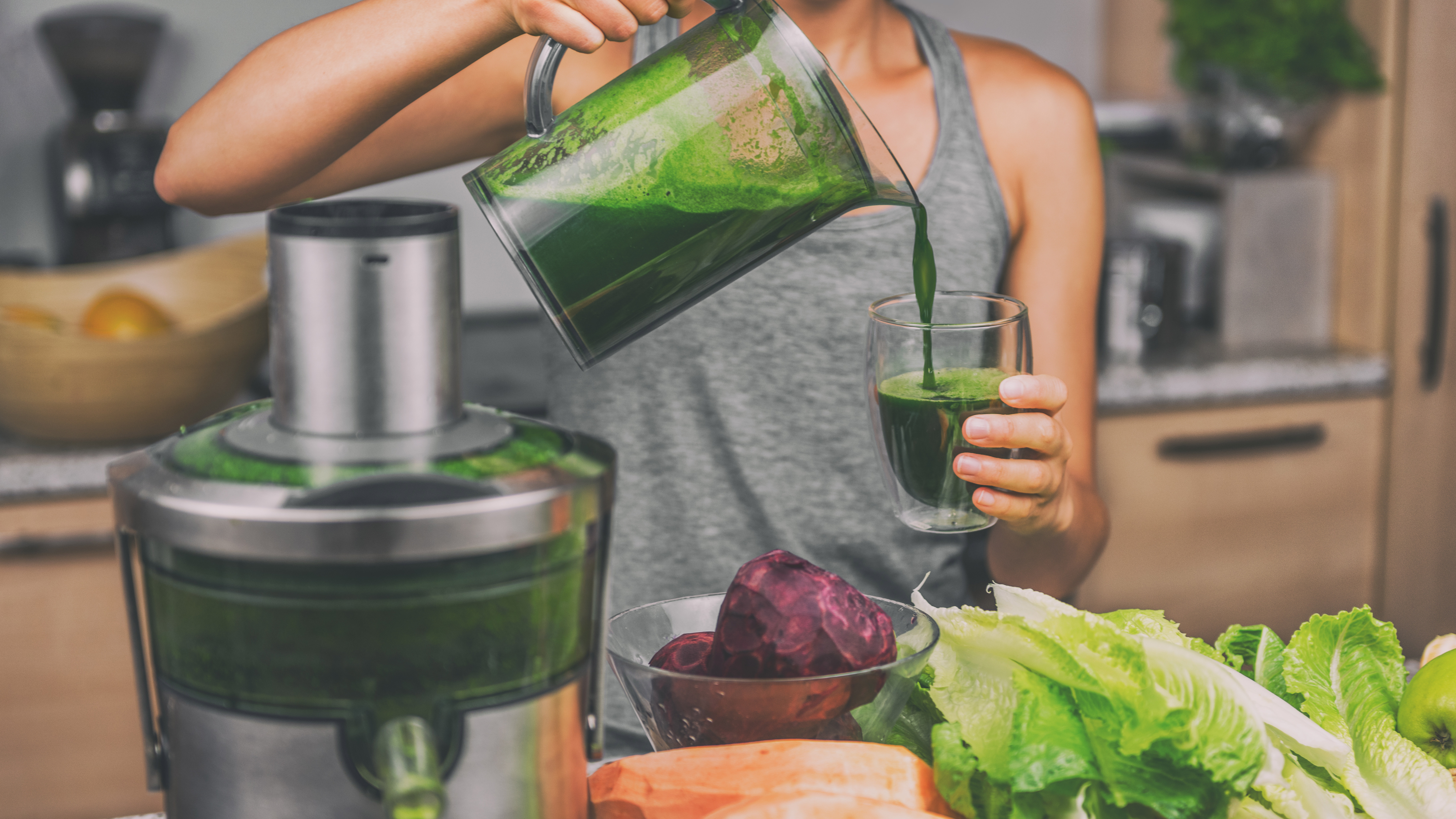When we think about making our diets healthier, increasing the amount of fruit and vegetables we consume is one of the easiest steps we can take. According to America’s Health Rankings only 8% of adults in the US are getting their five-a-day - the recommended amount of fruit and vegetables needed for a healthy diet according to the World Health Organization (WHO).
By consuming two or more fruits and three or more vegetables a day - the amounts suggested by the Dietary Guidelines for Americans, the WHO believe that not only will the risk of chronic illness and disease be reduced, it’ll also ensure your getting the recommended level of dietary fiber too, which aid digestion and prevent constipation.
So buying one of the best juicers has got to be a great way of increasing the amount of fruits and vegetables we consume and achieving a healthier diet by loading up on mountains of essential vitamins, right? Turns out it’s not quite as cut and dried as that - here’s what you need to know.
So,is using a juicer actually healthy?
The process of juicing means we consume more fruit and vegetables than we would if we were to eat them whole. For example, a single glass of orange juice might contain five oranges - but it's unlikely you’d eat that many oranges in one go if you were eating them whole.
Fruits contain natural sugar called fructose as well as fiber. When fruit is eaten whole, fructose is absorbed slowly by our bodies, but using a juicer means the flesh and skin of the fruit, which contains the fiber, is discarded. This means drinking fruit juice has a similar effect on the body as drinking full-sugar sodas do. On top of this, the high sugar content can also contribute to tooth decay.
In the UK, Public Health England and the NHS recommed not consuming more than 5.3 oz/ 150ml of fruit juice per day due to the sugar content, which is likely to be far below the volume many of us drink when we have a standard glass of fruit juice.
Does that mean I should give up drinking fruit juice?
In short, no. A balanced and varied diet means enjoying everything in moderation, including fruit juice. There are, however, a couple of ways to lessen the concerns about sugar and potential impact on your health.
First off, try including lots of lower sugar vegetables like celery and broccoli as well as leafy greens such as kale or fresh herbs in your juice, this will make a much healthier, lower sugar juice than if you make it using 100% fruit.
Juice with vegetables and leafy greens might not sound as appealing as a sweet orange or apple juice, but if you experiment and combine the vegetables with a small amount of fruit for flavor, you’ll be making tasty lower sugar juices in no time.
Portion control is the other thing to consider, juice can be particularly unhealthy for us when consumed in large portions, so being mindful of portions and trying to stick to small quantities of juice is another way of consuming juice without worrying about consuming too much sugar. A great way of doing this without having to think about it too much is to have a small glass that you use for fruit juice so that you can’t accidentally pour too much in.
Fruits and vegetables contain healthy vitamins, minerals, and phytonutrients that are all important for our health. If you dislike eating fruits and vegetables or struggle to include them in your everyday diet, you’ll likely benefit from this extra nutrition, provided you don’t over do it and consume too much sugar.
It’s important to eat a wide variety of different coloured fruits and vegetables as a part of a healthy diet, but if you find you stick to the same few at every meal time, juicing is definitely a good way of introducing variety and getting different nutrients and antioxidants into your body.

What about fiber?
Juicing removes fiber and the experts recommend we should all be looking to increase fiber in our diets not reduce it. According to Harvard School of Public Health fiber is important for reducing the risk of developing diseases such as heart disease and diabetes.
A good way to make juicing healthier is to use the pulp rather than throw it in the trash. There are lots of recipe ideas online for using up the pulp discarded by your juicer - here’s six that we think are particularly appetizing. Not only is it better for your wallet and the environment not to waste the pulp, it’s also a great way of adding the fiber back into your diet so that you don’t lose its health benefits when you remove it in the juicing process.
The best juicers for health
If you want to juice as a way of including more nutrients in your diet, you’re best off looking for a cold press juicer. These juicers slowly grind up the fruits and vegetables and they don’t produce any heat, unlike centrifugal juicers, which means more of the precious nutrients are retained and not damaged during the juicing process.
Want to get your hands on the best cold press juicers now? Check out these great deals for some of the best on the market.
In addition to fruits and vegetable juices, some cold press juicers can be used to make lots of other healthy recipes including nut milks, hummus, salsa and even nut butters. So if you fancy a juicer but you’re worried it’ll gather dust between making small portions of vegetable juices, look for a juicer like the Nama Vitality 5800 that’s robust enough to cope with nuts and chickpeas so you can use it for much more than just juice.
- Want to make your fries healthy? Then check out these great air fryer deals
from TechRadar - All the latest technology news https://ift.tt/3g2ocQc
Aucun commentaire: